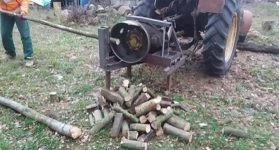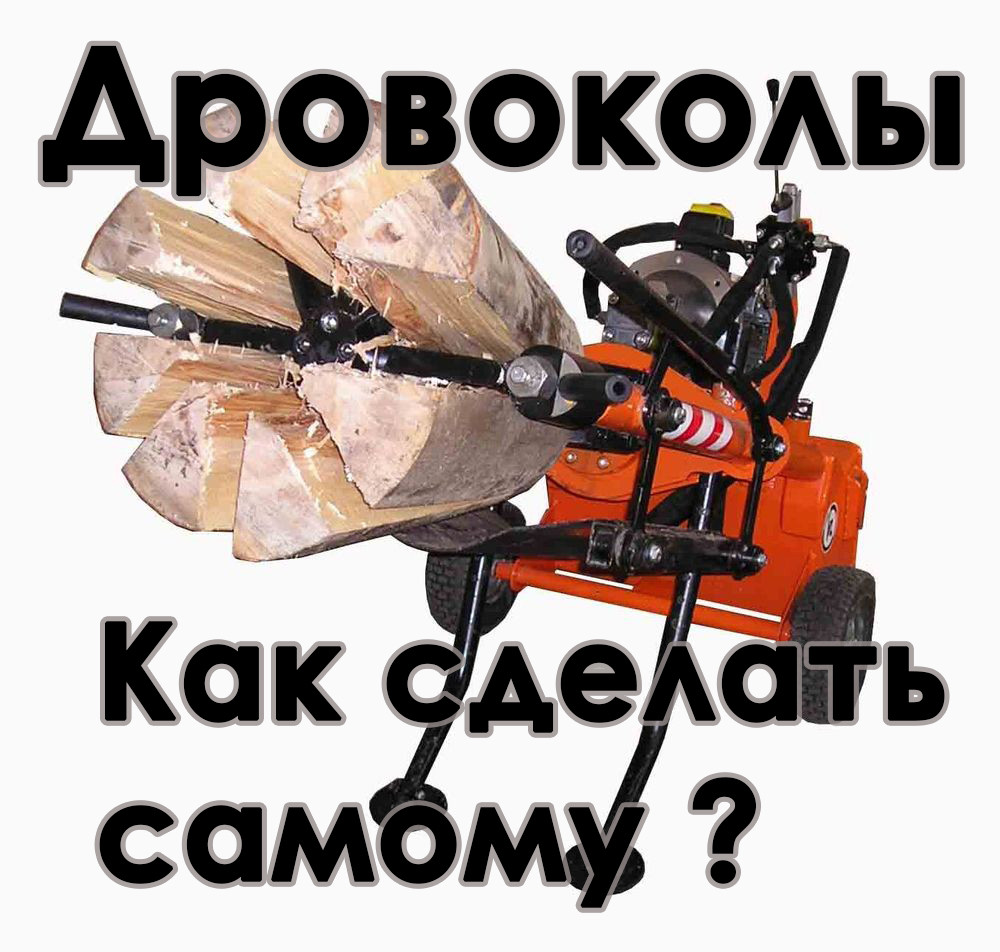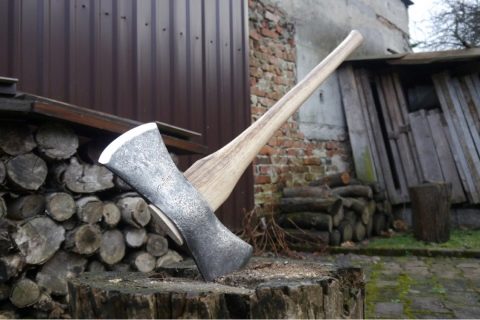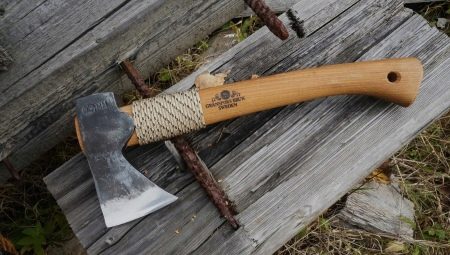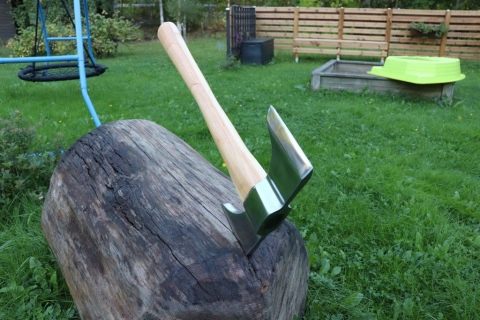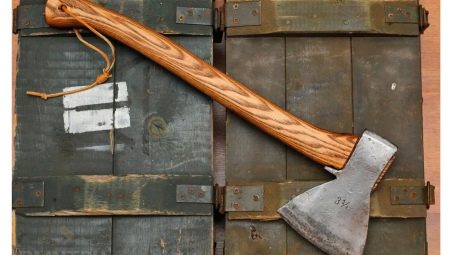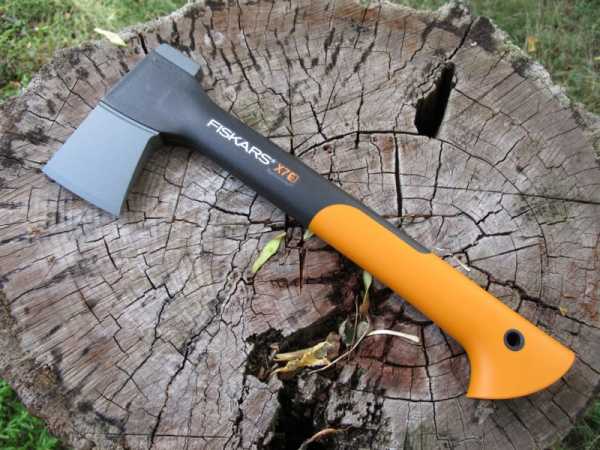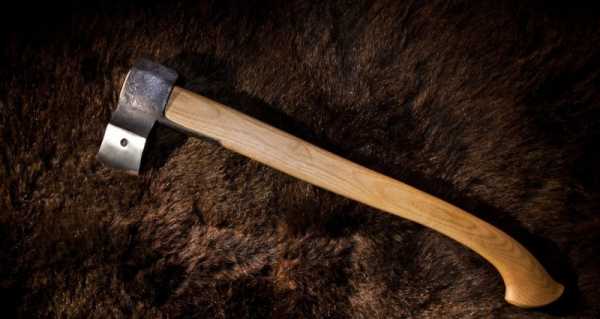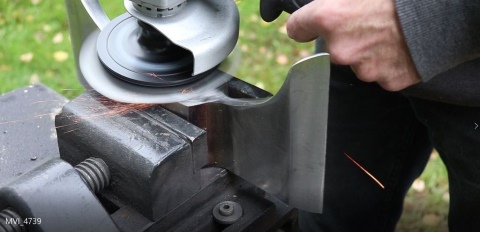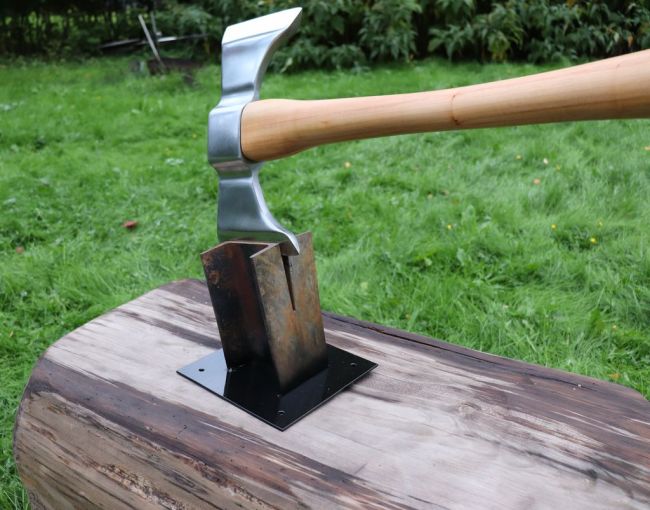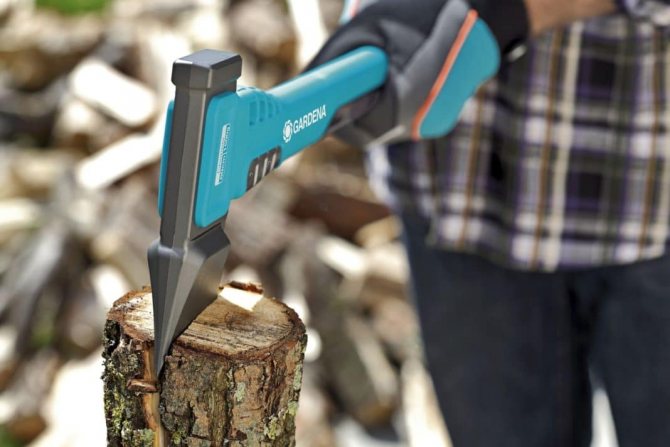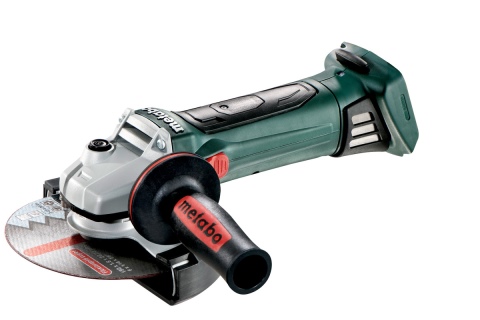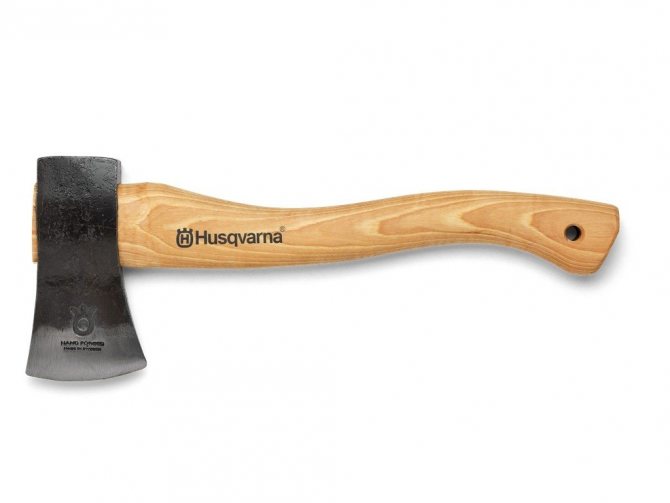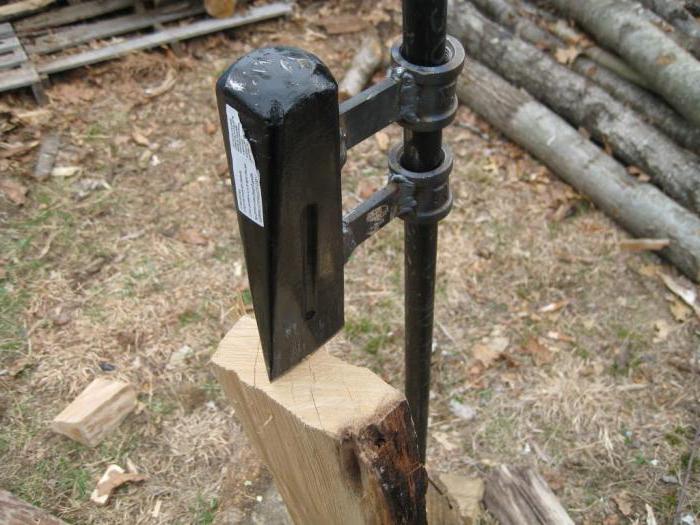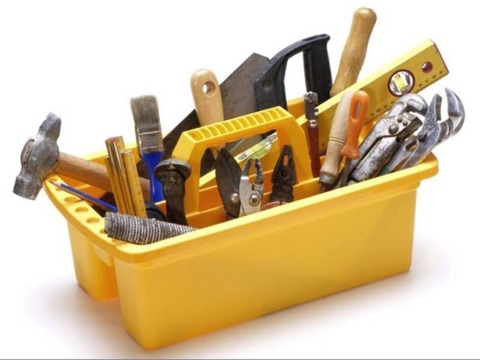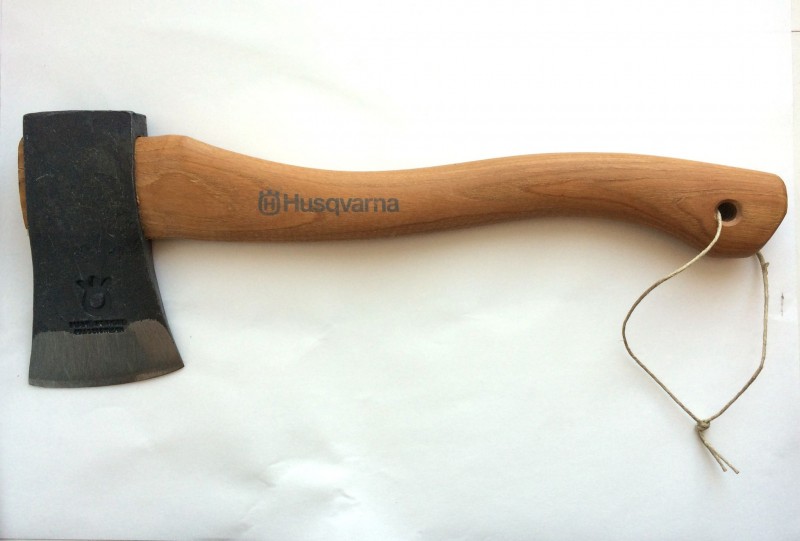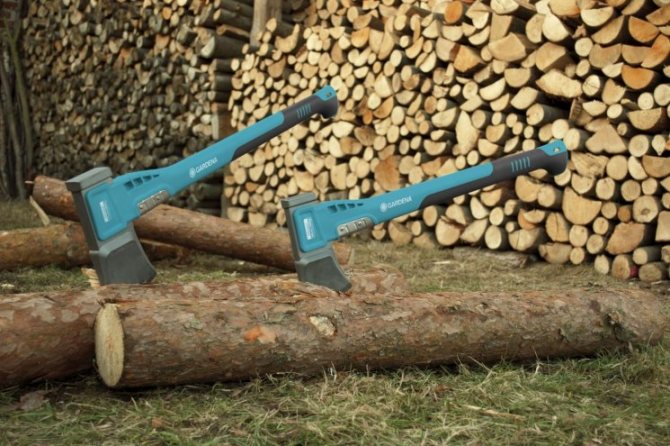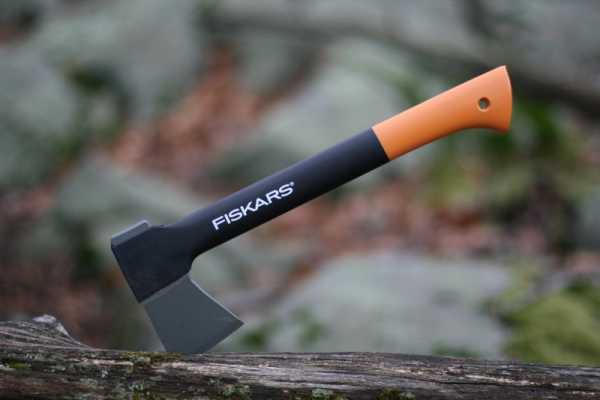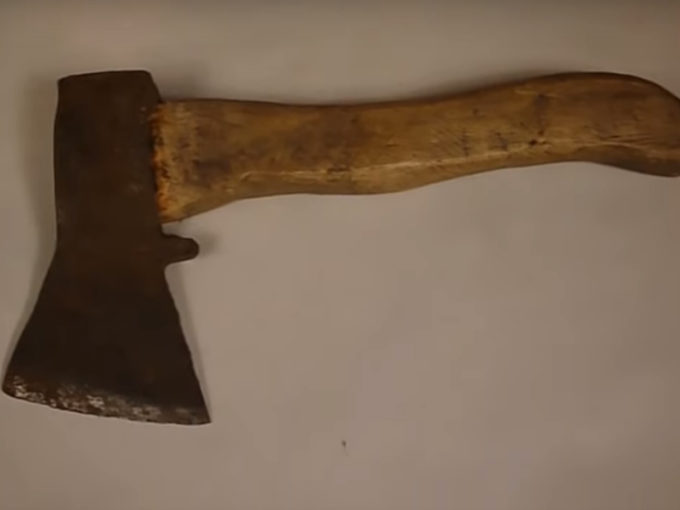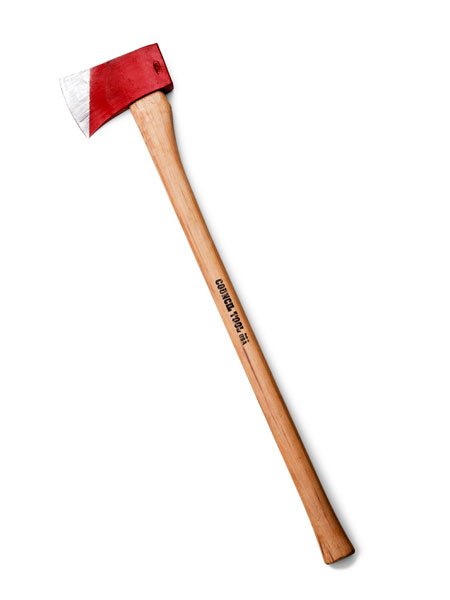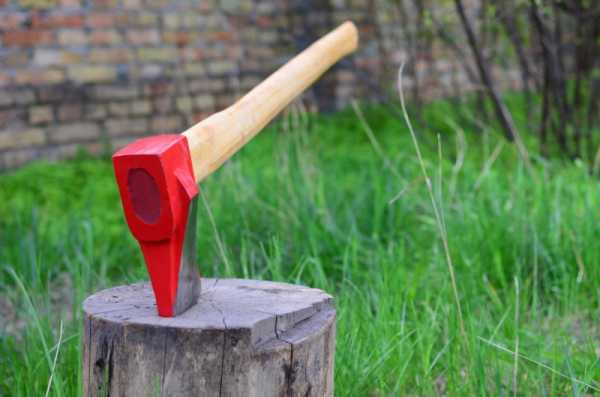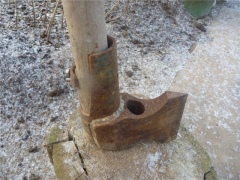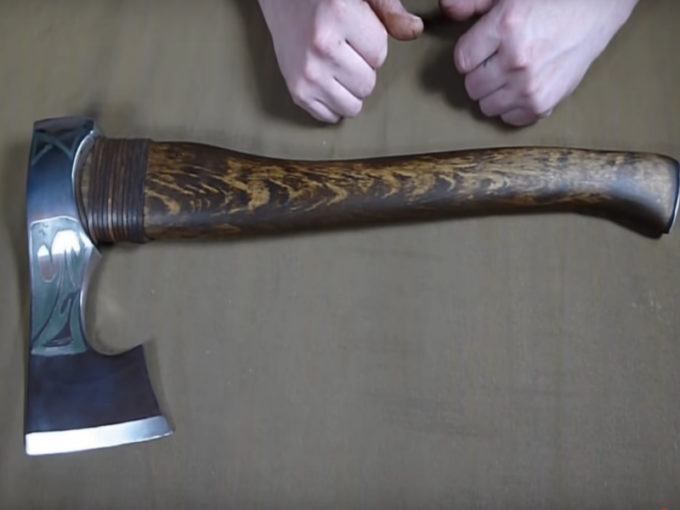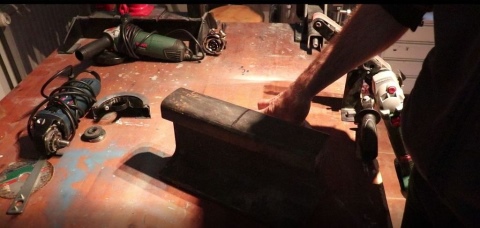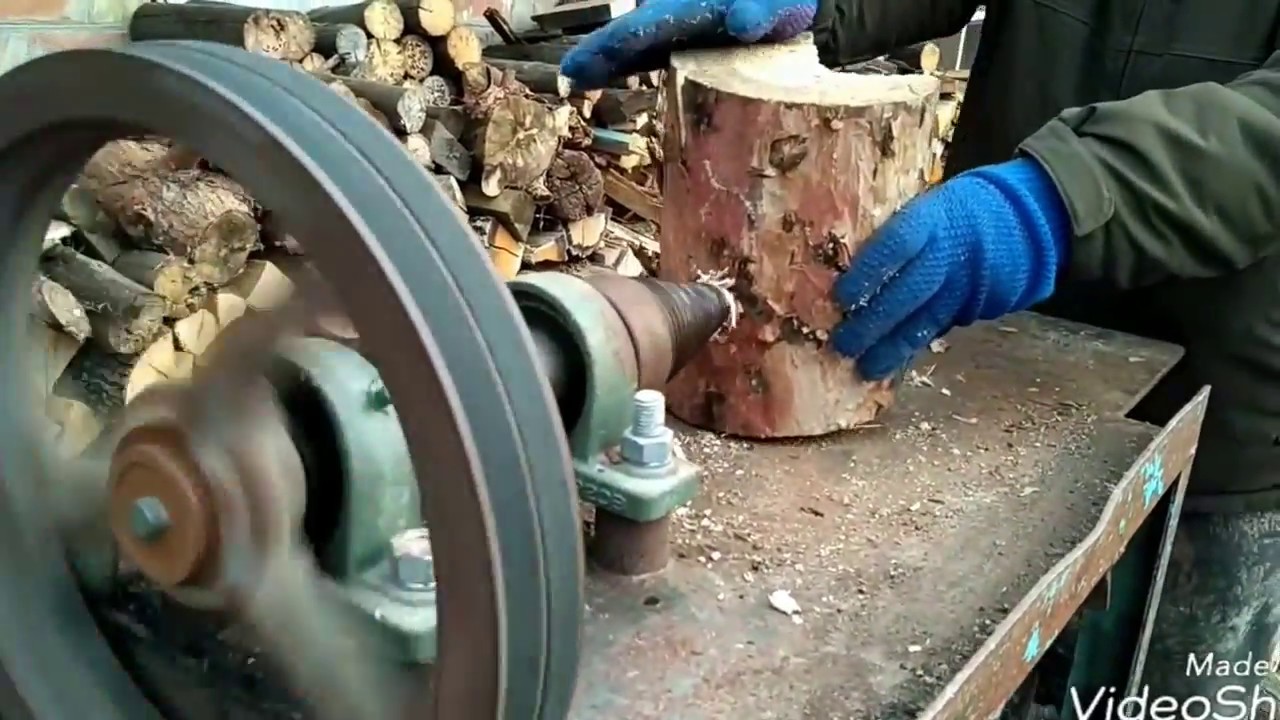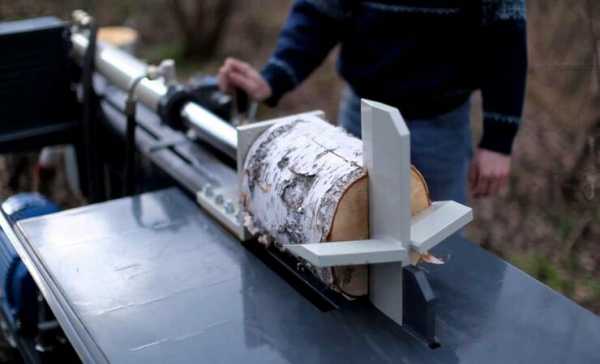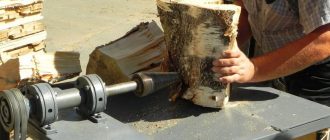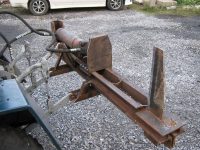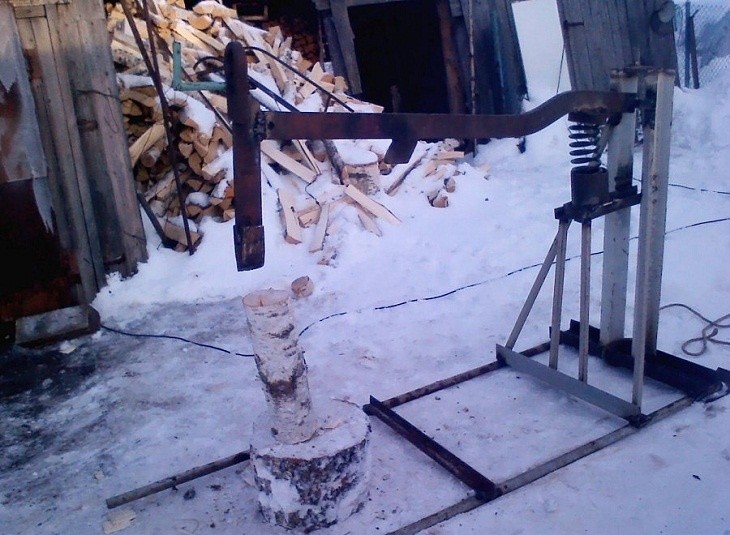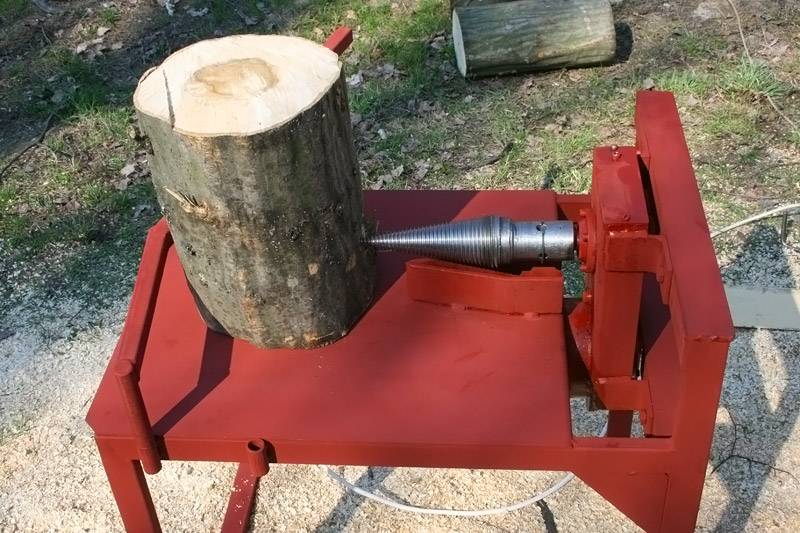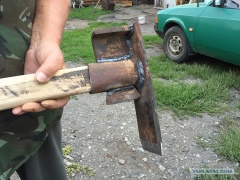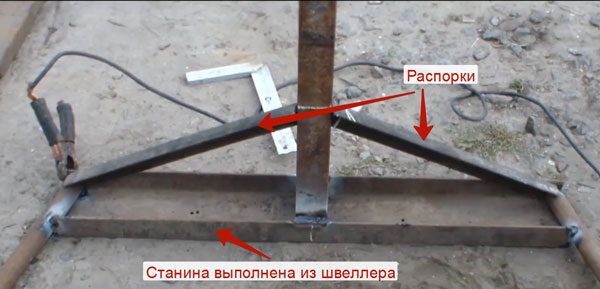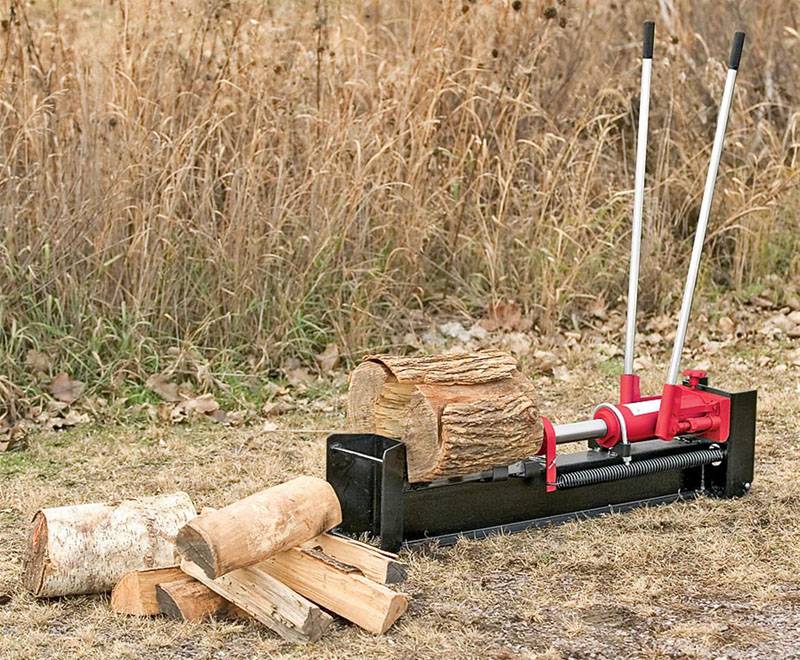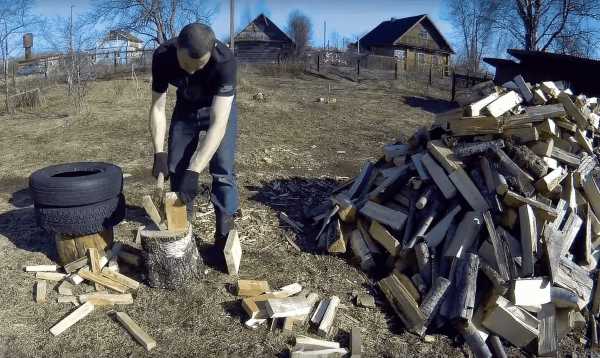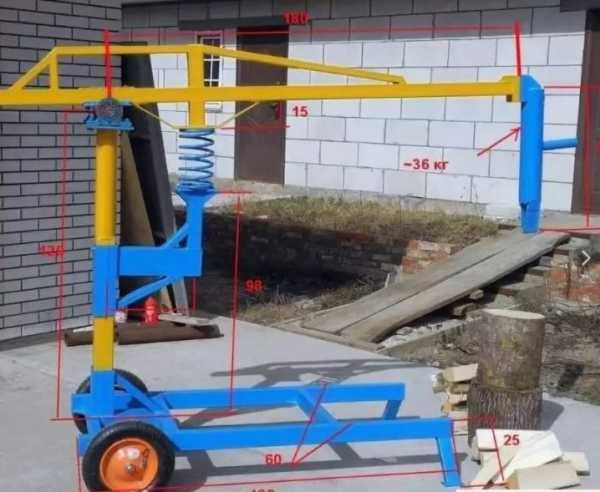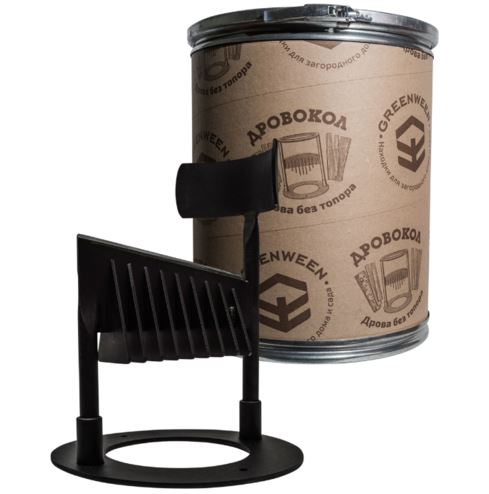Electric wood splitters
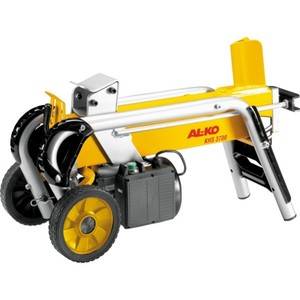 A manual mechanical wood splitter, although it makes wood harvesting easier, still requires noticeable costs of physical labor. The use of an electric motor or an engine from a walk-behind tractor will help to make the process even easier. There are several different designs of such wood splitter. But making a device with your own hands according to this scheme is already more difficult. In addition to the ability to work with a welding machine, a minimum knowledge of electrical and mechanics is useful.
A manual mechanical wood splitter, although it makes wood harvesting easier, still requires noticeable costs of physical labor. The use of an electric motor or an engine from a walk-behind tractor will help to make the process even easier. There are several different designs of such wood splitter. But making a device with your own hands according to this scheme is already more difficult. In addition to the ability to work with a welding machine, a minimum knowledge of electrical and mechanics is useful.
Screw (conical)
Some of the most popular types of electric breakers are conical and screw. They differ only in the presence of a thread on the piercing cone or its absence.
Manufacturing recommendations:
- Taper and thread options. The process of splitting firewood is much easier, if a thread is applied to the surface of the cone, then the cone itself enters the block, splitting it. The most difficult thing is to correctly cut the threads on the cone. With access to a lathe and experience with it, you can make this part yourself. Otherwise, you will have to order it. It has been experimentally established that the optimal parameters for the thread are as follows: a pitch of 7 millimeters with a depth of 3 mm. The depth of the hole for landing on the motor gearbox shaft should be at least 7 cm.If there is already a ready-made threaded cone, making this wood splitter with your own hands will not take much time.
- Electric motor and gearbox. An electric motor of sufficient power from 2 kW or more is required, while with a rotational speed of 250 to 600 rpm. When the shaft rotation speed is less than 250 rpm. the splitting is slow, and at more than 500 - you can not hold the log in your hands. If you are lucky enough to find an engine with suitable parameters, you can fit an already made cone onto its shaft. If the speed is higher, you will have to use a reduction gear or use a chain / belt drive to reduce the speed. Chain drives are very noisy, require lubrication, and sometimes it is difficult to find the sprockets needed for them. It is better to double the belt drive. This will reduce the frequency of slippage.
- Where to locate the motor. If, nevertheless, it was necessary to turn on the gear in the design, then the engine will be more conveniently located from below, and the screw cleaver itself should be installed at a level selected taking into account its height in order to work with a tilt. It is better to fix the splitting screw itself at a height of 8 to 12 centimeters above the working surface. In this case, even small logs will not turn.
Hydraulic cleaver
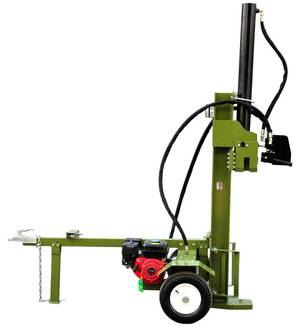 Homemade hydraulic wood splitter - the most powerful. But it also costs more and is difficult to manufacture. In addition to the base, electric motor, transmission and cutting elements, you will also need a sufficiently powerful hydraulic cylinder (like in a jack), and such cylinders are not cheap. In addition, a hydraulic fluid tank and pump are required.
Homemade hydraulic wood splitter - the most powerful. But it also costs more and is difficult to manufacture. In addition to the base, electric motor, transmission and cutting elements, you will also need a sufficiently powerful hydraulic cylinder (like in a jack), and such cylinders are not cheap. In addition, a hydraulic fluid tank and pump are required.
The hydraulic wood splitting machine works with great effort and requires metal up to 10 millimeters thick to assemble it. The power it develops is enough to break a block of wood into 8 logs in one go. Therefore, it is advisable to make the piercing element of the structure in the form of an asterisk.
Rack-mounted unit
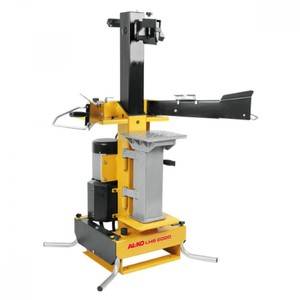 The principle of operation is similar to a hydraulic wood splitter, but the gear rack, which is part of the worm gear, plays the role of the piston of the hydraulic cylinder. The stop fixed at the end of the rail pushes the chock through the cleaver, fixed on the bed motionlessly.Also, when making a rack and pinion wood splitter with your own hands, you may need a gearbox or a reduction gear.
The principle of operation is similar to a hydraulic wood splitter, but the gear rack, which is part of the worm gear, plays the role of the piston of the hydraulic cylinder. The stop fixed at the end of the rail pushes the chock through the cleaver, fixed on the bed motionlessly.Also, when making a rack and pinion wood splitter with your own hands, you may need a gearbox or a reduction gear.
If for the manufacture of ordinary wood splitters there are enough available materials and the ability to work with welding and a grinder, then to assemble a screw, hydraulic or rack and pinion wood splitter, you will need turner skills, knowledge of mechanics, electricians, the ability to make calculations and build drawings in all details, and the search for some components will be difficult ...
Types of manual wood splitters
The most popular are hand-held wood splitters (also called kinetic), which operate on the basis of simple physical principles and do not require special physical capabilities. The main types of fixtures are:
scrap-cleaver (the log on which the cleaver is installed is pricked with a sharp forward movement using a special rod-scrap);
Wood splitter
spring (there is a lever of force, the method of a weighted working element is used);
DIY spring manual log splitter
- with a manual drive (there is a special pedestal, on it there is a blade oriented upwards. The log is placed on the blade and can be easily split in two using, for example, a sledgehammer);
- rack (there is a special rack with notches, which is a pushing element).
Homemade rack and pinion wood splitter
Wood splitting tool with foot pedal
If you often heat with wood, then you have repeatedly faced the problem of harvesting them. To simplify the process as much as possible, you can use manual mini-wood splitters - such as Greenween, Strela, Kolundrov. Such devices will help to quickly and efficiently split the most "complex" logs, and even women (including the elderly) can use them.
It is convenient to use such mini wood splitters.
Even women can use such a wood splitter
Greenween
The device has a basic and multifunctional modification. But the device is identical in both cases: a wide blade made of high-strength steel is attached to the frame. On the edges of the blade, ribs are fused - special rigid plates that divide the cracked log into parts.
Photo of wood splitter Greenween
Log splitter GreenWeen
The basic model differs from the multifunctional chop diameter. With the help of the second version of the device, even the thickest logs can be dealt with. It has a special semicircular plate against which the free end of the log rests.
The main advantage of the Greenween wood splitter is its safety.
The basic modification is equipped with a solid metal ring that acts as a side support. The inner diameter of the ring indicates the maximum thickness of the chocks. The Greenween log splitter is carefully designed and ergonomic, and therefore it is easy and not tiring to work with it. It weighs 5.7 kg, its height is only 35 cm. The multifunctional version of the tool weighs even less - 4.8 kg.
The basic modification of the wood splitter has a solid metal ring
"Arrow"
This is a hand tool, something between a construction scrap and a cleaver ax. As a result, it can be used for many purposes, and not only for splitting firewood. For example, for churning ice or ice, for loosening frozen or dense soil during construction.
Manual wood splitter "Arrow"
The design of the tool is telescopic; there is a working element (a long rod with a handle) and an impact element (a pointed cone in the lower part). The handles are rubber, so the tool does not slip during operation. The principle of work is simple: the rod rises and falls on the log, as a result of which it splits.
This tool is multifunctional
The Arrow can be used to split very heavy and thick logs. The tool is easy to work with, it copes well with soft wood. As for other benefits, these include:
- small size;
- reduction of the applied physical force during work;
- versatility (we talked about this above).
Arrow can split the heaviest and thickest logs
The wood splitter is small
But there are downsides, including:
- unattractive appearance;
- load on the lower back (this does not go away);
- high risk of injury (the wedge can slide off the block - usually of a small diameter, more chips or the log itself can bounce off);
- the appearance of calluses (even despite the fact that the handles are rubber).
There is a risk of injury when working with a wood splitter
Kolundrov
It is an alternative to Arrow, but safer to use. Kolundrov has high performance, looks quite nice and is safe to use. The lower part is stable, it has holes for fastening, thanks to a metal ring on top, chips and splitting logs do not fly off to the sides, which means they cannot injure a person.
Manual wood splitter Kolundrov
Even knotty and damp logs can be easily broken with sharpened knives.
Table. Market average prices for popular manual wood splitters in 2019-2020
| Name of the wood splitter | Average cost, rub. |
|---|---|
| Greenween | 5 650 |
| "Arrow" | 1 690 |
| Kolundrov | 5 800 |
Options for choosing a good cleaver
There are simply no universal tips and recipes on how to choose the best cleaver for chopping wood. The choice of a tool depends on several important factors that are individual for any person:
- weight;
- length and material of the handle;
- blade shape.
Cleaver weight
Weight is perhaps the most controversial characteristic of a cleaver. If you look from one side, the more weighty the cleaver is, the easier it is to split thick chocks with its help. If you choose a light tool for the job, you will have to deliver several blows, while using a heavy cleaver allows you to get the job done with one blow.
Traditional cleaver
It should be remembered that the preparation of firewood is a rather lengthy and energy-intensive process; not everyone can swing a heavy tool for several hours. Therefore, it is better to choose a cleaver in accordance with your physical capabilities.
The correct cleaver for a person with average physical capabilities should have a mass of 2-2.5 kg. A heavier instrument should be preferred by people of great physical strength and considerable dimensions.
It is more convenient to split small chocks with a light cleaver, but difficulties may arise with medium-sized logs.
Blade shape
Which cleaver is suitable for harvesting firewood in most cases can be determined by the shape of the blade. There are two versions:
- wedge-shaped;
- the so-called "eared".
The latter species appeared relatively recently and has earned conflicting reviews from woodcutters.
Cleaver ax
It is confirmed by many experienced cutters that such a tool often not only does not split the chock, but it gets stuck in it for a long time.
Based on this, it would seem, we can conclude that wedge-shaped cleavers are out of competition. But it is not so! Manufacturers of "eared" blades in the instructions give a small caveat: such a tool should only be used when working with dry wood.
Handle material and length
Not so long ago, there was no alternative to wooden cleavers.
Since time immemorial, both the wood chopping ax and the cleaver have been made with wood handles that have a unique ability to damp shock vibrations. It should be noted the prevalence of such material, its low cost, which is of decisive importance for many.
The only, but very significant disadvantage of wood handles is that when an inexperienced woodcutter is working, they can split. And the point here is not at all in the strength of the material or the marriage admitted during manufacture - the impact technique is of primary importance.
Relatively recently, an excellent replacement for wood was brought out - fiberglass composite material. Despite its lightness, this material is an order of magnitude superior to wood in strength and slightly falls short of metal in this indicator. The vibration damping properties of fiberglass are also very high, and therefore it is pleasant and convenient to work with such a handle. And if you take into account that, due to the low density of the handle, you can make any length without significantly increasing the weight of the tool, then it is better to prefer a cleaver with a fiberglass hatchet.
Splitting ax with long fiberglass handle
The force of the cleaver's blow directly depends on the length of the ax - the longer the lever, the more force develops with its help. But to maximize the potential of the tool, you need to learn how to use it correctly. In other words, the use of a long ax will be effective only when an experienced person is working with the cleaver. For a beginner, a cleaver that is too large is more likely to become a burden.
So how to choose the right cleaver?
First of all, the mass of the tool should be selected depending on the physical development of the person who will use it.
Before buying, you should take into account whether dry or wet firewood will have to be chopped and, in accordance with this, give preference to wedge-shaped or "eared" blades.
The length and material of the handle are equally important selection criteria. In this case, the decisive factor is the lumberjack's experience and financial capabilities. A wood hatchet is not the most practical, but the cheapest option. It is better to choose a fiberglass pen, which, although it will cost more, will last much longer.
Nuances and rules of use
Experienced wood splitters have formulated a number of recommendations to facilitate the use of cleavers:
- it is necessary to prick on a flat, dry and non-slippery area;
- the largest deck with even cuts should be used as a stand for logs;
- in summer and autumn, it is better to let a freshly sawn forest dry in chocks;
- in winter it is better to let the chocks freeze.
- it is better not to try to split very large logs in half, but to chop off from the edges;
- if there is a crack in the chock, you need to hit it with a cleaver;
- a knotty block of wood tediously prick between knots;
If the ax is stuck in the block, you need to swing it along with the block, turn it over in motion so that the butt of the cleaver hits the support.
Safety precautions when chopping wood
When splitting firewood with a manual cleaver, the following requirements should be observed:
- the chock is placed on the edge of the deck farthest from the person; in case of a miss, the ax will stick into the deck, and not into the leg;
- legs should be spread wide so that a broken cleaver does not hit the leg;
- split poles should be immediately carried away or thrown away from under your feet;
- there should be no other people on the swing line;
- protective gloves, sturdy shoes and goggles are required.
When working with mechanized cleavers, the following rules are added:
- do not stand on the split line;
- put a chock and pick up chopped poles only when the feed is turned off.
Before turning on the device, it is imperative to inspect it and check its serviceability.
Chopping wood - with a properly selected manual or mechanized cleaver turns from a tedious duty into an easy entertainment. With certain working and design skills, simple models of cleavers can be assembled in a home workshop. Compliance with safety rules will help to preserve health and life.
Mechanical helpers for splitting firewood
A number of metalworking enterprises manufacture wood splitters. According to the principle of operation, they are divided into several types:
- Cleavers - setting of the chopping action. The block is placed on special supports, and then blows are applied with a weighted chisel.
- The cutting wedge is placed motionless, the objects being split are supported on them.The blows are applied with heavy sledgehammers, splitting is performed when passing through a passive working body.
- Crushers are installations with a mechanical pusher drive. The log is laid on the bed, and then it is pushed through a flat or cruciform knife.
- Screw breakers are embedded inside the laminate. Penetrating deeper, they split even strong and twisted wood.
Wood splitting process
You can chop wood in different ways. Traditionally, it is customary to make blows with an ax, trying to split the sawn-off fragment of a log, striking the end part.
A heavy wedge (the ax is wedge-shaped) is embedded in the body of the block. If wood comes across without knots and a loose structure, then even with relatively low physical costs, the wedge will be inserted inside. Tangential forces will push the fibers apart, and the body will split into two components.
If the angle at the apex is made small, then the wedge-shaped body will penetrate deeply inside, but the magnitude of the tangential forces will be small. Destructive effort will not be enough. The ax will jam in the gap that forms.
When a less acute angle is formed, the shear forces will be more significant. They will be able to split the wood.
With a slow penetration of the wedge, the kinetic energy not accumulated as a result of the swing and subsequent impact becomes decisive. The process takes place by penetration into the plastic body, where, when certain values are reached, the bonds between the fibers are broken.
Studies have shown that for wood splitters, the angle at the top should be 30 ... 38 °. Then the penetration of the wedge will be accompanied by the breaking of bonds with less effort. Only some species will resist: elm, maple, apple, cherry.
For pine, oak, ash and a number of other species, a small penetration into the body is sufficient. Breaking ties is pretty easy.
The length of the block also affects the magnitude of the forces. The shorter it is, the less resistance the tree has when splitting. Usually the length determines the depth of the firebox - the wood must be placed inside the stove so that the door can be closed.
Screw cleaver - what is it?
The simple construction of a cone wood splitter is very effective when you need to chop a few cubic meters of firewood
You can chop wood, without making a lot of effort, using a screw splitter. To understand how this device works, it is enough to remember how, in the process of unsuccessfully screwing a screw into a wooden rail or strip, these objects split at the place of physical impact. It is easy to deal with this phenomenon - it is enough to pre-drill a hole for a self-tapping screw, and it will go like clockwork. The principle of splitting wood when screwing in a screw was used by home craftsmen in the construction in question. But a simple screw does not push the fibers apart enough, so it was modified by significantly increasing the taper and reducing the ratio of thread depth to tool diameter. As a result, a screw was obtained, which is a symbiosis of a wedge and a self-tapping screw. The device can easily be screwed into the wood thanks to the threaded part and breaks it along the fibers due to the multiple increase in the diameter of the tool.
Screw wood splitter diagram
Depending on the design of the drive, there are several types of screw log splitter. In some, the screw is mounted directly on the shaft of an electric motor. The requirements for the power unit in this case are put forward quite tough - the electric motor must be low-speed (no more than 500 rpm), and powerful enough (at least 3 kW).
The scheme in which the cone is installed directly on the motor shaft is only suitable for low-speed power plants
In other schemes of screw cleavers, electric motors of any type are used, and a decrease in rotation speed is achieved through the use of mechanical gearboxes, belt and chain drives. In this case, a pulley (sprocket) of small diameter is installed on the shaft of the power unit, and a large diameter is installed on the shaft of the wood splitting cone. The ratios of their sizes are selected so as to reduce the rotational speed of the electric motor to an acceptable 300 - 500 rpm. Sometimes, when using high-speed motors, it is impossible to achieve this without significantly increasing the diameter of the driven sprocket (pulley). In this case, install an intermediate shaft and a double (step) gear.
It is possible to simplify the design of a mechanical splitter while maintaining high productivity by installing an electric motor with a gear
All structural parts are mounted on a solid base, which is equipped with a folding table for ease of operation.
The advantages of cone wood splitters include:
- simplicity of design;
- the possibility of making at home (almost all components, except for the cone, can be found in your own courtyard);
- high performance of the equipment;
- low installation cost;
- the operation of the unit does not require operator qualifications.
Unfortunately, the simple and reliable design of the screw splitter is not without its drawbacks. A huge disadvantage of a conical wood splitter is that wood with intertwining fibers is an insurmountable obstacle for its gimbal, so basal and especially knotty logs will have to be cut in a different way. The second disadvantage is the incomplete division of the chocks into logs. Often, you have to manually finish cutting a large block of wood into two separate parts, and not everyone can do that. I would also like to note the impossibility of making a wood splitter cone without using a lathe. Of course, this can only be partially considered a disadvantage, since there are many proposals on the network both for the manufacture and sale of screws of any size.
Varieties of household machines
In the private household, two types of firewood chopping devices are used, differing in working organs. The rack and pinion machine, assembled according to a lightweight design, contains a cleaver in the form of a vertically fixed sharpened plate. The cone wood splitter includes a cone with a threaded screw thread. If there is a plan and drawings of a screw wood splitter, any locksmith can easily assemble the machine with his own hands.
It is not difficult to assemble a homemade cone wood splitter with your own hands, the drawings of which can be developed independently. To do this, it is enough to have:
- electric motor 3-4 kW;
- screw cone;
- bearings;
- gear or chain gear reducer;
- shaft.
There is no separate diagram for the location of parts and accessories, there are no restrictions. The assembly process can be based on dimensions corresponding to a person's height:
- bed height - 650 mm;
- table length - 850 mm;
- tabletop width - 450 mm.
Experienced users recommend placing the motor under a table top to protect the unit from chips and sawdust. For safety reasons, all moving parts must be covered with a cover.
In addition to the above options, chopping of firewood can be carried out by a mechanical device, which can be set in motion by the power of one person. The equipment is controlled by a handle attached to the gearbox shaft. A mechanical wood splitter can be quickly converted into an electrical unit if you use a belt drive adapted for a walk-behind tractor.
Manufacturing techniques
Making an ax from a rail with your own hands, of course, differs from operations performed in an industrial environment: there is no casting, the workpieces will need to be welded, and this is not the same at all.
Operations for converting a railroad bed into an ax are broadly as follows.
- The workpiece must be clamped in a vice and cut off the rail base. Cutting should be done with a grinder, burning cutting wheels and making sure that the wheel does not break in a deep cut.
- The workpiece is given the appearance of an ax. After a series of operations, two identical halves should be obtained.
- The eye of the ax is made by sawing the rail head in both blanks.
- The halves of the future ax are sharpened and polished.
- The workpieces are heated in an oven or oven, then they are carefully welded so that the two blades formed are directed in different directions, and the cut grooves form the eyelet of the butt.
- Weld seams are ground.

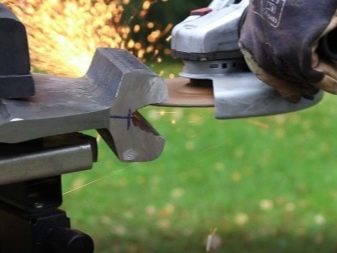
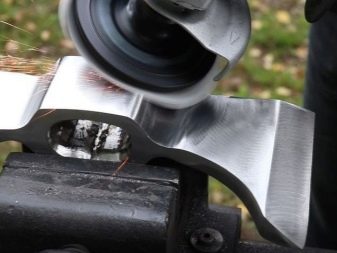
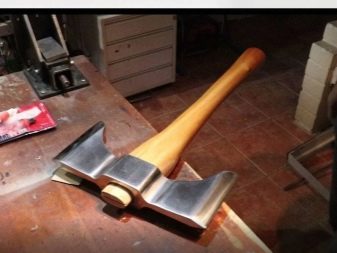
A product made according to the technology described above has mainly a decorative function. It will be quite difficult to work with it, the second blade can cause injury, and the weld between the halves of the blade will be quite laborious to make as strong as a cast structure.

However, rail steel is also perfect for a more practical product. You can make a cleaver out of it. Cleaver is a powerful ax designed for splitting logs. The large angle of convergence of the edges of the blade allows you to successfully break the wood fibers, while the blade of a conventional ax gets stuck in them and you have to take additional - rather laborious - operations for splitting.
The wood splitter has one more feature - it is much heavier than the usual carpenter's brother. The weight of a cleaver can reach 2–2.5 kg, homemade monsters up to 3 kg are known.
To make such a cleaver from a rail, you will need approximately the same set of tools, with the only difference that the grinding of the product will not be so thorough.
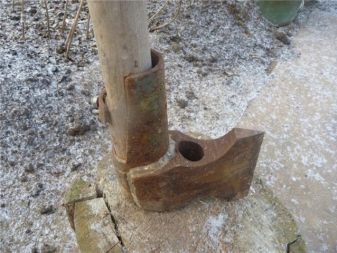
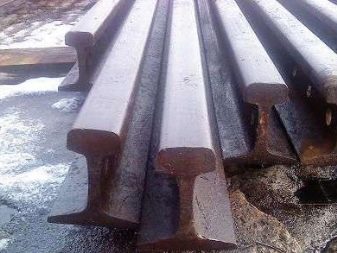
The stages of work are almost the same as in the case of making a decorative ax.
- Cut the sides of the rail support flush.
- Having marked out, cut out the butt of the future cleaver using a stationary vise.
- Shaping the blade with a flap grinder. Sharpness is not so important for a heavy cleaver, but a very heavy product will not work out of a rail blank, so the blade will have to be sharpened.
- An eyelet is cut in the rear part (rail head).
- From above, the eyelet is welded with a piece of steel cut from the rail support.
- The birch hatchet is made independently or is used commercially available.

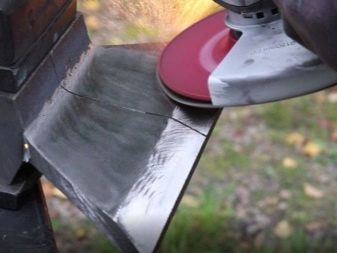
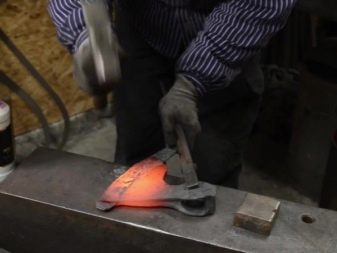
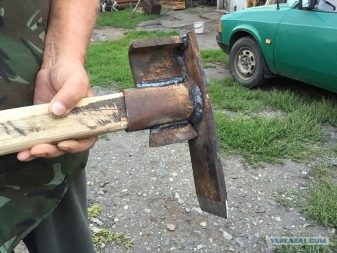
The lightest type of ax is taiga. Its weight can be about 1 kg. This tool is designed for work in the forest: felling, felling, chopping branches, removing bark, cutting a rough groove, chopping wood and other rough work. Such a tool is perfect for extreme sportsmen. Lightness and functionality are its main features.
Outwardly, such an ax can be distinguished from a carpenter's one by the sharper angle between the ax handle and the head of the butt (70 ° versus 90 ° for a conventional ax), as well as by the absence of a sharp toe protruding beyond the butt and the rounded shape of the blade.


To make a lighter ax, you can use the rail pad rather than the rail itself.
- A block of about 3 cm wide is cut from the lining.
- The place of the eyelet is marked in the bar with the help of a drill.
- Next, you need to warm up the workpiece, and the higher the temperature, the faster the work will go. With the help of a chisel and a sledgehammer, the eye hole is broken. The workpiece will have to be reheated many times.
- After creating a through hole in place of the eyelet, you need to expand it to the required size with the help of a crossbar.
- Then you need to forge the blade of the ax. This operation is quite laborious, the workpiece will have to be repeatedly heated again.
- The blade can be reinforced with a special file shard insert so it stays sharp longer. To do this, insert a previously prepared piece of file into the cut along the blade. Connect both parts by welding.
- Forging the workpiece, make the final connection of the blade parts.
- Further forging of the ax is aimed at giving it the required shape.
- The final finishing of the workpiece will have to be done with a grinder using cutting and grinding wheels.



